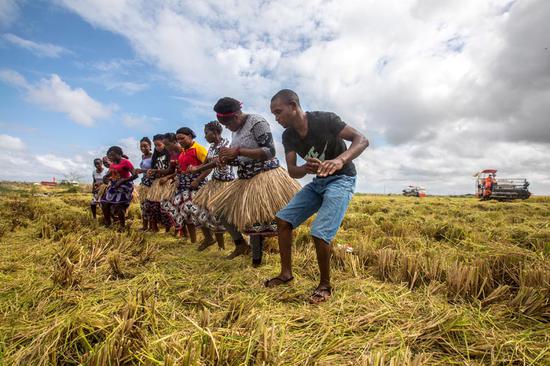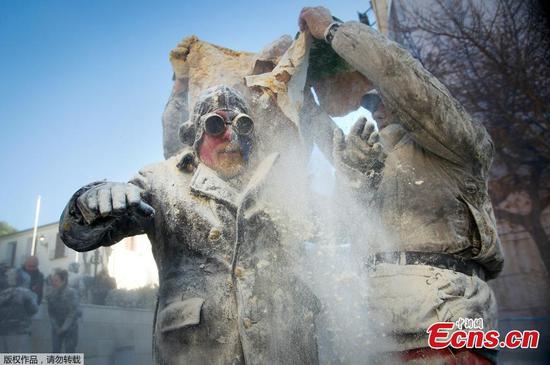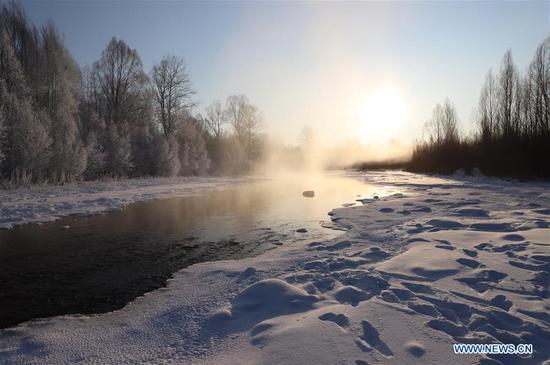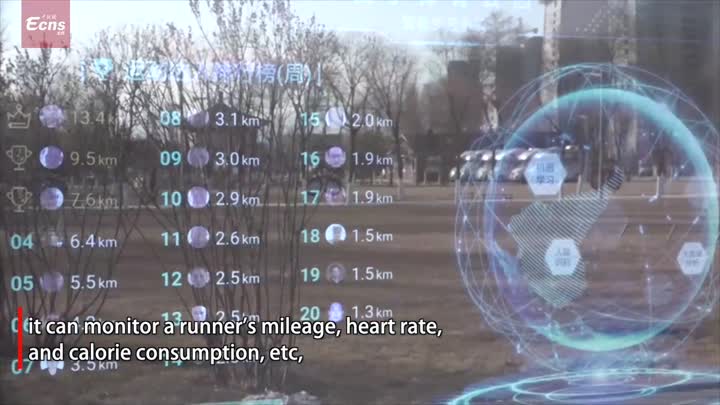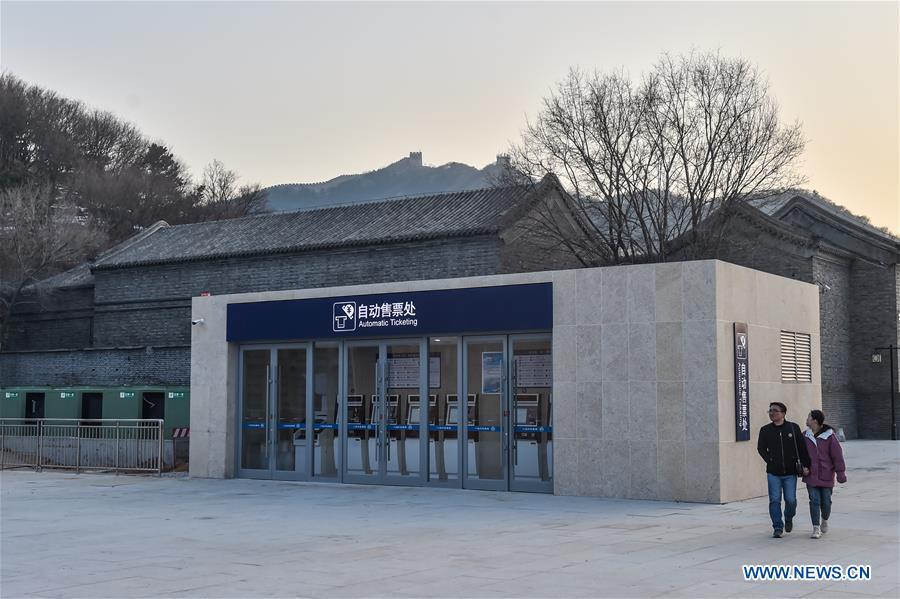
Photo taken on Dec. 28, 2019 shows the automatic ticketing office of the Badaling Changcheng Railway Station in Beijing, capital of China. The high-speed railway line connecting Beijing and Zhangjiakou in north China's Hebei Province will go into service on Monday, China Railway Corporation said Saturday. (Xinhua/Peng Ziyang)
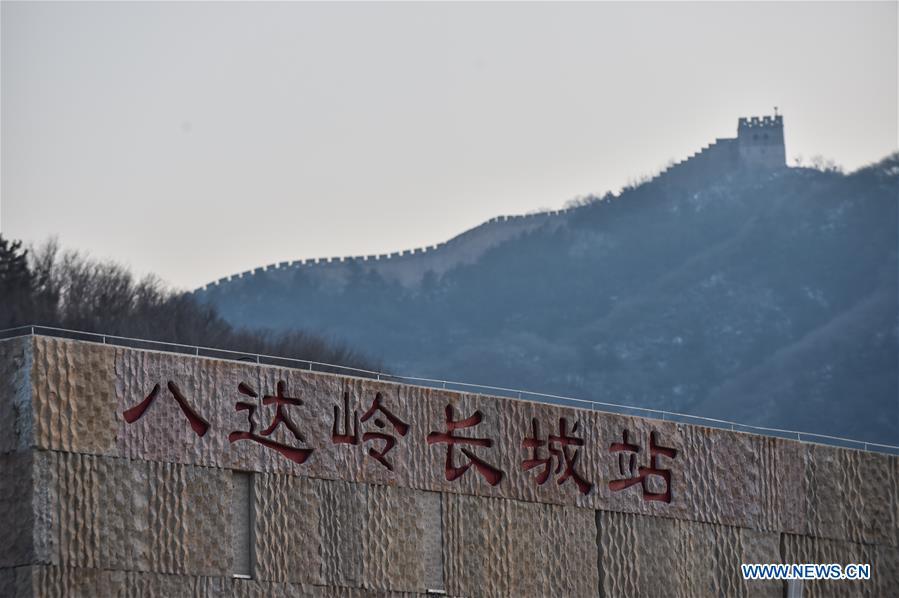
Photo taken on Dec. 28, 2019 shows the exterior of the Badaling Changcheng Railway Station in Beijing, capital of China. The high-speed railway line connecting Beijing and Zhangjiakou in north China's Hebei Province will go into service on Monday, China Railway Corporation said Saturday. (Xinhua/Peng Ziyang)
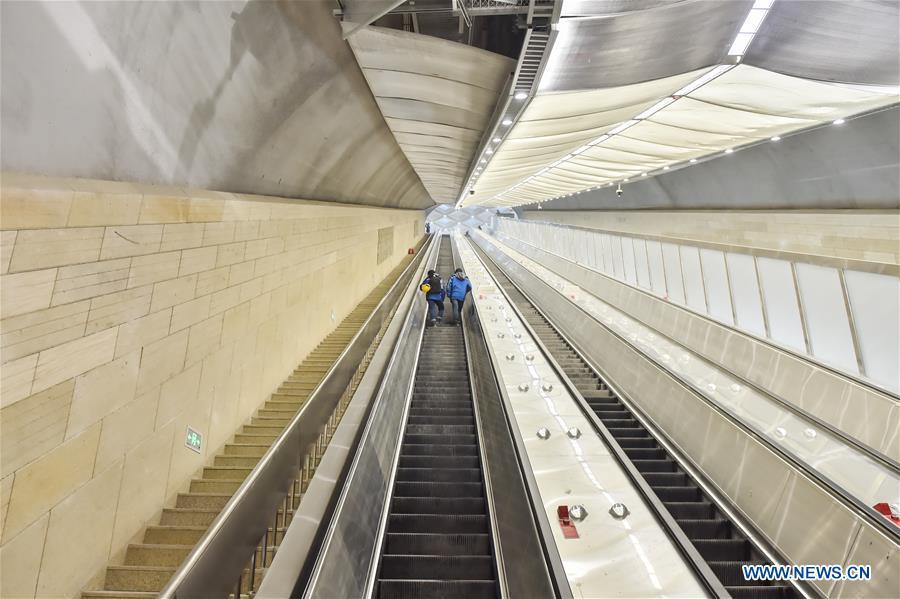
Photo taken on Dec. 28, 2019 shows an escalator inside the Badaling Changcheng Railway Station in Beijing, capital of China. The high-speed railway line connecting Beijing and Zhangjiakou in north China's Hebei Province will go into service on Monday, China Railway Corporation said Saturday. (Xinhua/Peng Ziyang)

Crew members work on a high-speed train at Beijing North Railway Station in Beijing, capital of China, on Dec. 28, 2019. The high-speed railway line connecting Beijing and Zhangjiakou in north China's Hebei Province will go into service on Monday, China Railway Corporation said Saturday. (Xinhua/Peng Ziyang)
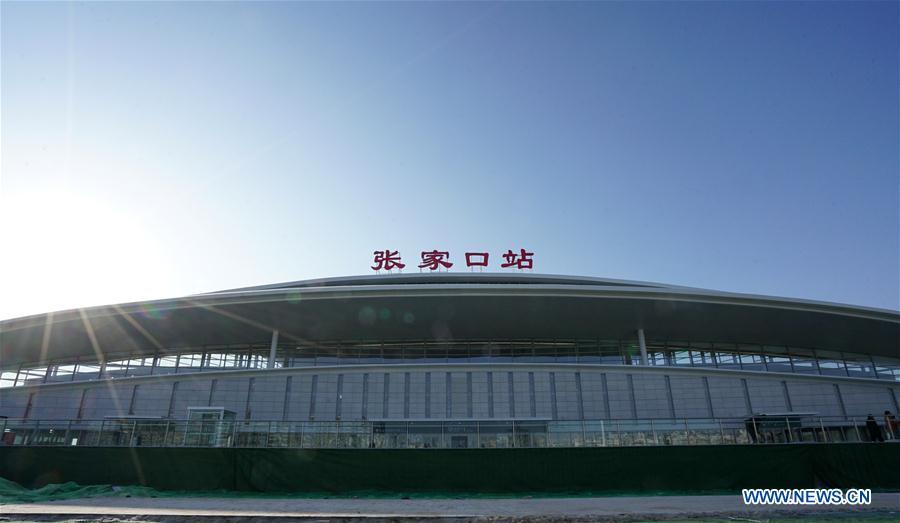
Photo taken on Dec. 29, 2019 shows Zhangjiakou Highspeed Railway Station in Zhangjiakou, north China's Hebei province. The high-speed railway line connecting Beijing and Zhangjiakou in north China's Hebei Province will go into service on Monday, China Railway Corporation said Saturday. The railway line is a major project for the 2022 Olympic and Paralympic Winter Games. It will reduce the travel time between Beijing and Zhangjiakou, the co-host city of the 2022 Olympics, from currently over three hours to 47 minutes. The railway is 174 km long, with a maximum design speed of 350 kph. (Xinhua/Mu Yu)
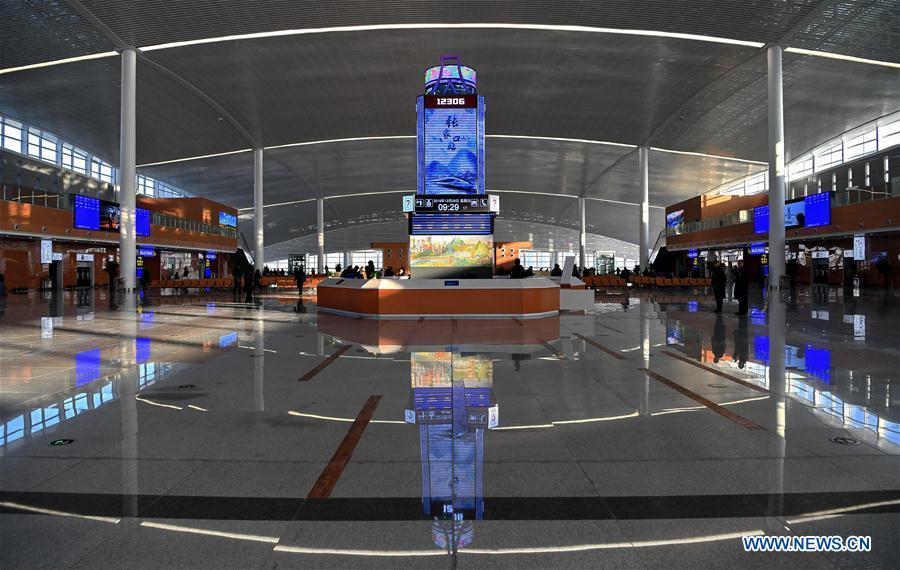
Photo taken on Dec. 29, 2019 shows the departure hall of Zhangjiakou Highspeed Railway Station in Zhangjiakou, north China's Hebei province. The high-speed railway line connecting Beijing and Zhangjiakou in north China's Hebei Province will go into service on Monday, China Railway Corporation said Saturday. The railway line is a major project for the 2022 Olympic and Paralympic Winter Games. It will reduce the travel time between Beijing and Zhangjiakou, the co-host city of the 2022 Olympics, from currently over three hours to 47 minutes. The railway is 174 km long, with a maximum design speed of 350 kph. (Xinhua/Mu Yu)
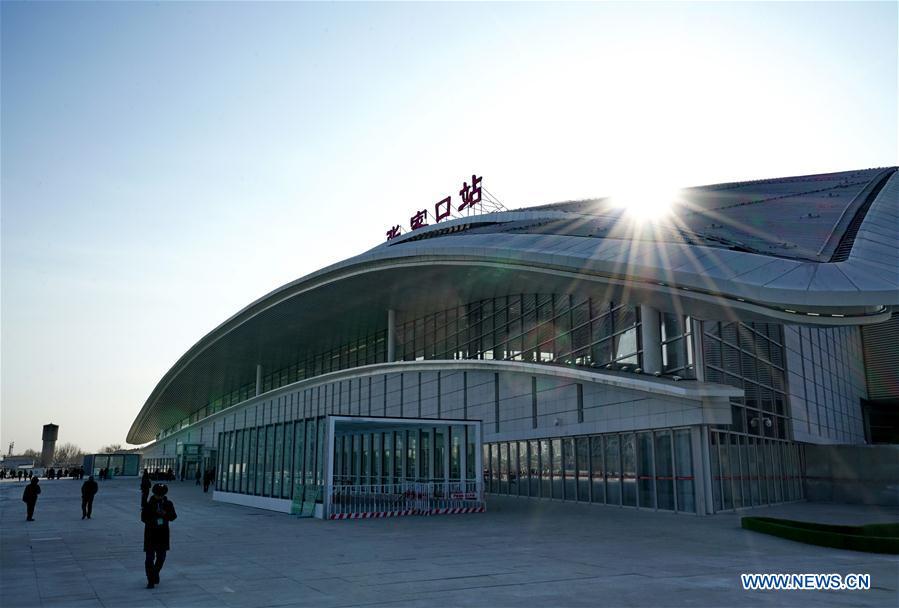
Photo taken on Dec. 29, 2019 shows Zhangjiakou Highspeed Railway Station in Zhangjiakou, north China's Hebei province. The high-speed railway line connecting Beijing and Zhangjiakou in north China's Hebei Province will go into service on Monday, China Railway Corporation said Saturday. The railway line is a major project for the 2022 Olympic and Paralympic Winter Games. It will reduce the travel time between Beijing and Zhangjiakou, the co-host city of the 2022 Olympics, from currently over three hours to 47 minutes. The railway is 174 km long, with a maximum design speed of 350 kph. (Xinhua/Mu Yu)
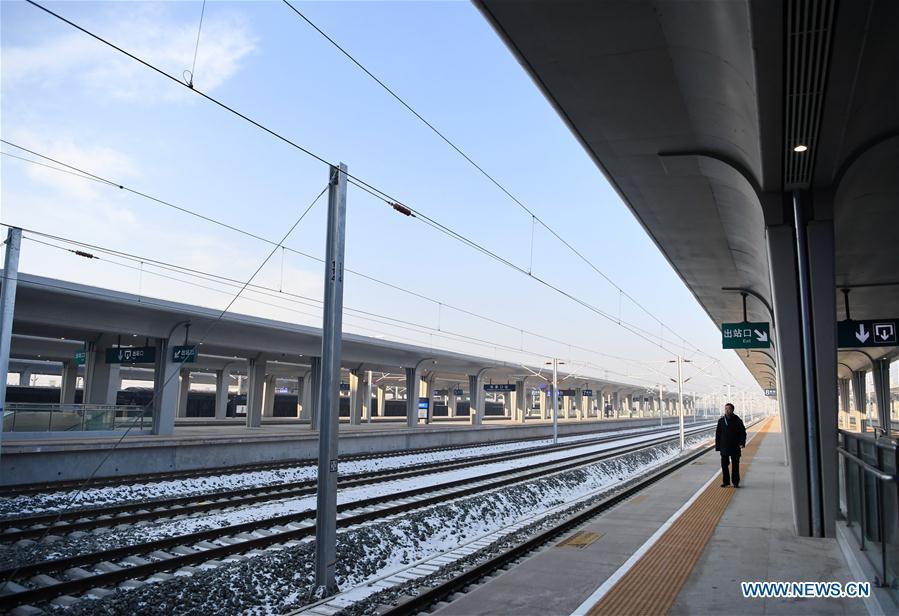
A staff member patrols on the platform of Zhangjiakou Highspeed Railway Station in Zhangjiakou, north China's Hebei province, Dec. 29, 2019. The high-speed railway line connecting Beijing and Zhangjiakou in north China's Hebei Province will go into service on Monday, China Railway Corporation said Saturday. The railway line is a major project for the 2022 Olympic and Paralympic Winter Games. It will reduce the travel time between Beijing and Zhangjiakou, the co-host city of the 2022 Olympics, from currently over three hours to 47 minutes. The railway is 174 km long, with a maximum design speed of 350 kph. (Xinhua/Mu Yu)
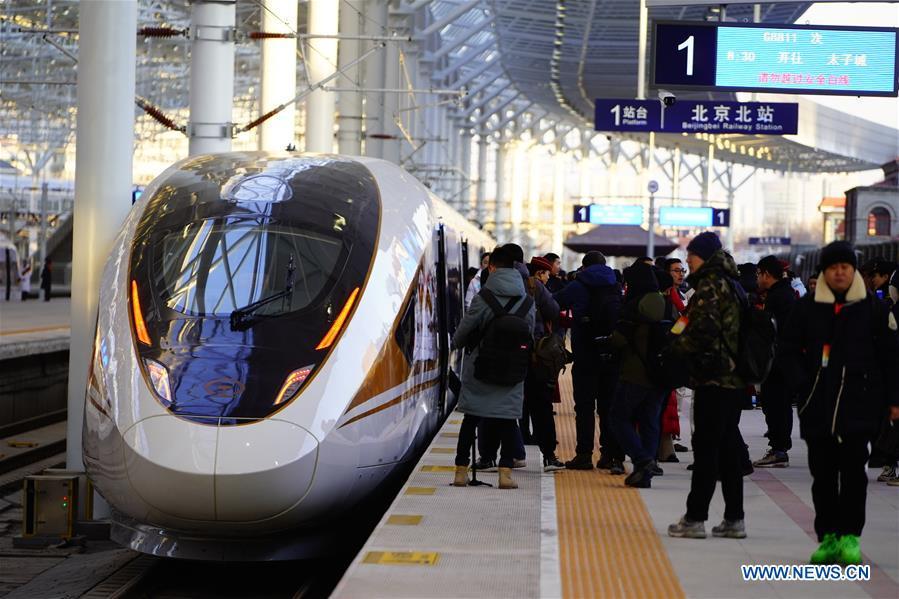
People wait to get on the G8811 high-speed train bound for Taizicheng Railway Station at Beijing North Railway Station in Beijing, capital of China, Dec. 30, 2019. The high-speed railway line connecting Beijing and Zhangjiakou in north China's Hebei Province went into service on Monday. Chongli railway, a branch line of the Beijing-Zhangjiakou high-speed railway, also came into service. (Xinhua/Xing Guangli)
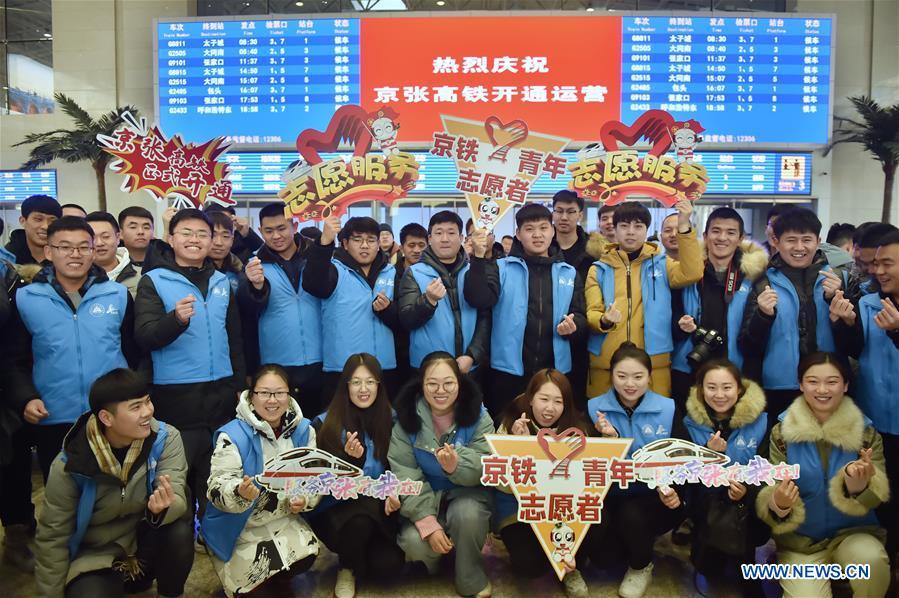
Volunteers pose for a photo at Beijing North Railway Station in Beijing, capital of China, Dec. 30, 2019. The high-speed railway line connecting Beijing and Zhangjiakou in north China's Hebei Province went into service on Monday. Chongli railway, a branch line of the Beijing-Zhangjiakou high-speed railway, also came into service. (Xinhua/Peng Ziyang)
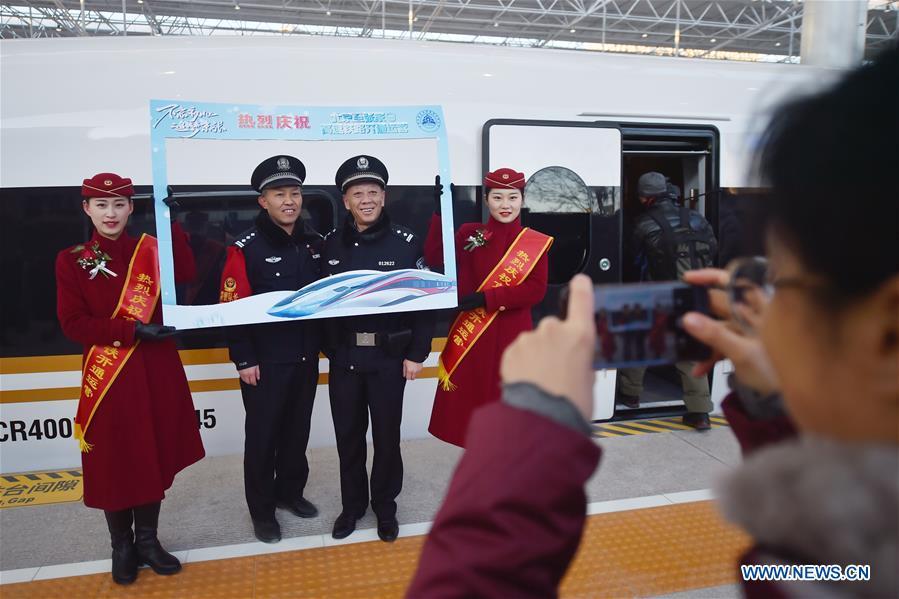
Staff members of the G8811 high-speed train bound for Taizicheng Railway Station pose for photos at Beijing North Railway Station in Beijing, capital of China, Dec. 30, 2019. The high-speed railway line connecting Beijing and Zhangjiakou in north China's Hebei Province went into service on Monday. Chongli railway, a branch line of the Beijing-Zhangjiakou high-speed railway, also came into service. (Xinhua/Peng Ziyang)
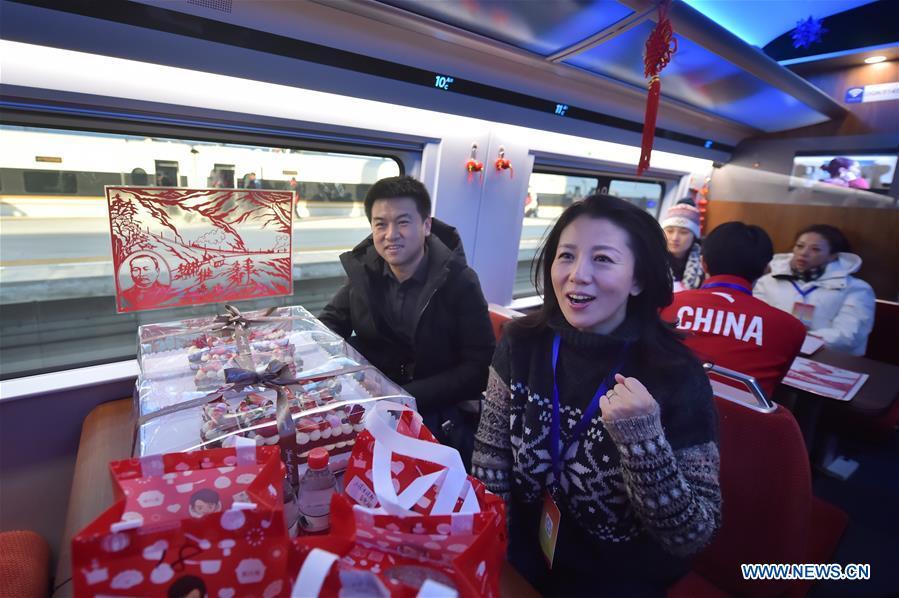
China's Winter Olympics gold medalist Yang Yang (Front) takes the G8811 high-speed train bound for Taizicheng Railway Station at Beijing North Railway Station in Beijing, capital of China, Dec. 30, 2019. The high-speed railway line connecting Beijing and Zhangjiakou in north China's Hebei Province went into service on Monday. Chongli railway, a branch line of the Beijing-Zhangjiakou high-speed railway, also came into service. (Xinhua/Peng Ziyang)











